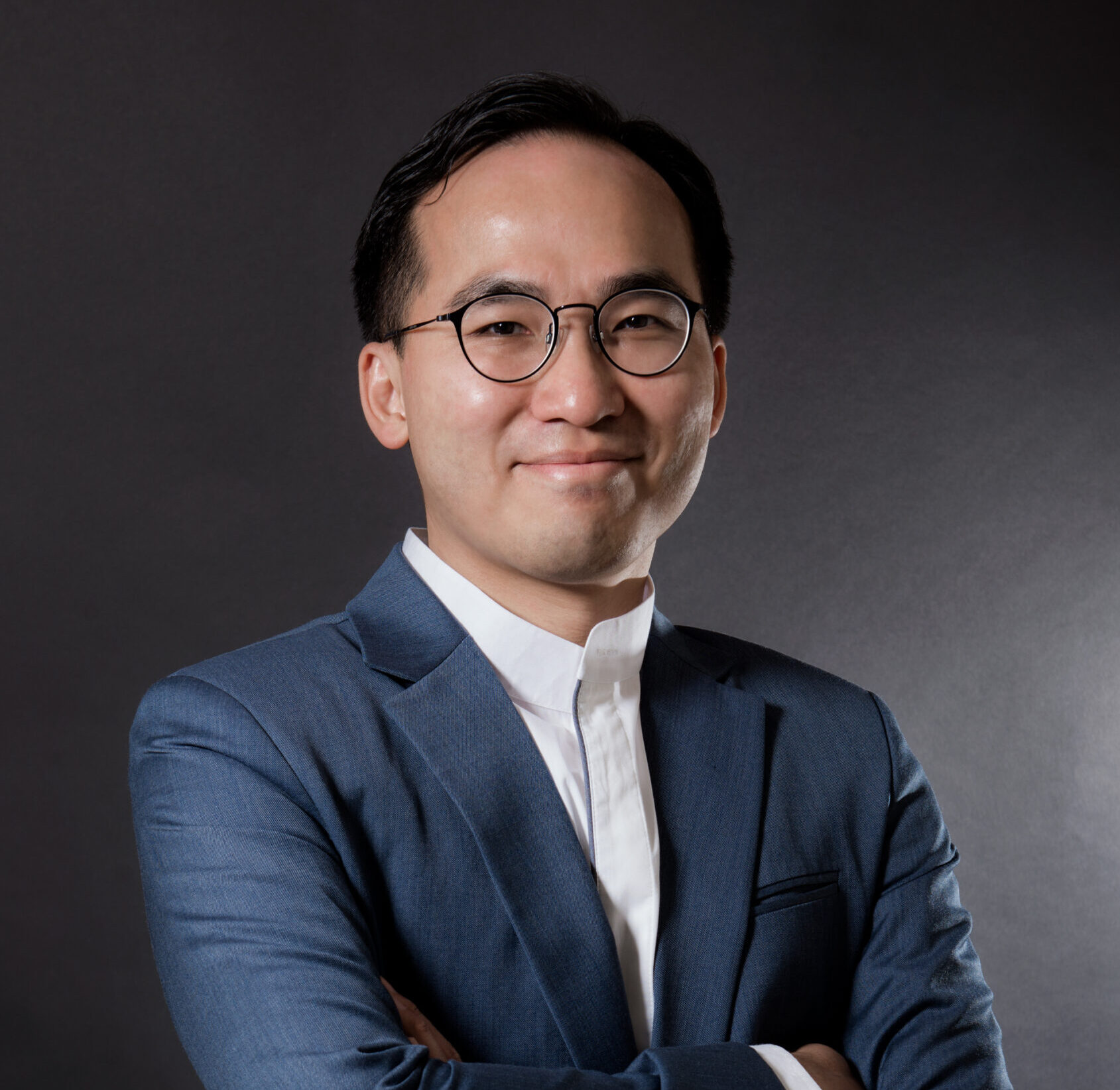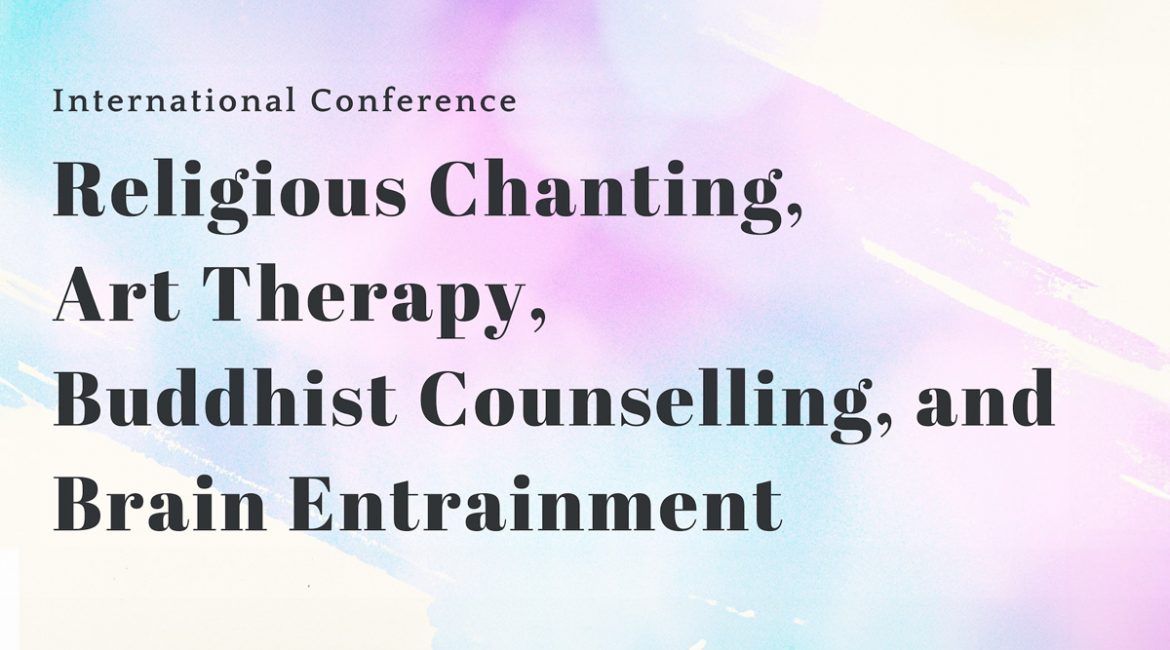In this series of interviews, I spoke to keynote speakers and guests of the “Religious Chanting, Art Therapy, Buddhist Counselling, and Brain Entrainment” conference from 18–19 October 2024 at The University of Hong Kong. The conference aims to apply spirituality and art therapy to counselling, using neuroscientific technology in contemporary society; foster interdisciplinary collaboration for application and innovation in mental well-being; and brainstorm new ideas for spirituality and art in the age of AI.
The conference is co-organized by The University of Hong Kong’s Centre of Buddhist Studies and Centre on Behavioral Health, Tung Lin Kok Yuen, and Buddhistdoor. It is funded by Faculty Conference Support Scheme, Faculty of Arts.
Dr. Ernest C. H. NG is the Chief Executive Officer of Tung Lin Kok Yuen, a Buddhist NGO dedicating to Buddhist teachings, education, and community services for over 80 years. Prior to that, he was the founder and Chief Investment Officer of an asset management company and Vice President of Morgan Stanley Asia. With an interdisciplinary background and over 15 years of experience in the financial market, he is particularly experienced in sustainable transformation, stakeholder communications, and change management strategy at the individual and organization level.
Dr. Ng is an expert and thought leader in applying wisdom tradition and spirituality into sustainable decision making in the market economy. He is also a qualified mindfulness teacher and a certified ANFT Forest Therapy Guide.

Raymond Lam (RL): Your lecture on the 19th is titled “Applying Pure Land Practices in Clinical Spiritual Care and Counselling.” When did Buddhist counsellors start to seriously look at Pure Land practice as a helpful tool in clinical environments?
Ernest Ng (EN): Application of Buddhist practices in Clinical Spiritual Care and counselling have become more developed in recent decades, but religious care for the sick and dying was taught and demonstrated by the Buddha more than 2,500 years ago. The famous dialogues between Bodhisattva Mañjuśrī and Vimalakīrti could also be considered as a model clinical consultation. Ever since the Eastern Jin Dynasty (266-420 AD), Master Hui Yuan (334-416) and many notable teachers have taught the application of reciting the name of Buddha for the sick and end of life. For Pure Land Buddhist practitioners or those influenced by it culturally, it is a familiar practice for the senior, the sick, and the dying.
However, practices in clinical setting would definitely benefit from more rigorous research studies just like those on mindfulness over the last few decades. As some recent studies have shown, Pure Land practices should not be minimized as simply a ritualistic or mystical experience but be explored to support the spiritual wellbeing and hence mental and physical wellbeing of those in needs. Their benefits as well as potential risks could also be better assessed and qualified if not quantified.
RL: What are some of the typical psychological and spiritual problems of patients and clients you have encountered, where Pure Land practices can help?
EN: Pure Land practices can address concerns such as anxiousness, sadness, anger, hopelessness, loss of meaning, and other feelings associated with significant life events. These range from sickness, aging, and the end of life to the grieving of loss of family members, self independence, and identity. Different Pure Land practices could be applied depending on careseekers’ cognitive functioning. On the other hand, typical narrative therapy or mindfulness-based cognitive therapy could be difficult to implement when clients are undergoing intense physical or emotional pain. Clients with memory loss, dementia, or challenging states of consciousness would be benefited from Pure Land practices with the consent of family members.
RL: How does the recollection of Amitābha Buddha and the teachings surrounding him (his compassion, his promise of rebirth, and so on) help clients during counselling sessions?
EN: It is possible for clients to learn the values and vows of the Buddha-s and Bodhisattva-s to connect with hope, courage, and meaning. It is also a gateway of transcendence from their current states of suffering to the other shore of liberation with peace and serenity similarly aspired in other Buddhist counselling modalities. The complexity of practices could range from reciting the name of the Buddha-s the Bodhisattva-s in the simplest form, to a further elaborated and expanded contemplation on the values they embodied, the vows they proclaimed, and deep meditation on the distinctive features of Pure Lands (and hence the liberation or the possibility of liberation) they promised.
In addition to the Amitābha and the Western Pure Land, clients could connect with different Pure Lands, Buddha-s, and Bodhisattva-s they resonate with. For example, I observed some common misconceptions about Amitābha’s Pure Land, like how it is only suitable for those approaching the end of life; or that the Pure land tradition contradicts with the practice of meditation. In these cases, it is important to offer options, for example, the Medicine Buddha’s Pure Land in the East for those rejecting death or the Maitreya Buddha’s Pure Land in the inner court of Tuṣita heaven for meditation practitioners.
However, clients may not have the sufficient faith, aspiration, and practice to connect with the Pure Lands in time of crisis. It is important for the practitioners themselves to manifest such faith, aspiration, and practice in order to “lend” the patients and clients such confidence, courage, and hope. However, it is not meant to be an imposition and definitely not coercion. It is a process of vertical transcendence with a horizontal one.
RL: Is there any role for the visualisation practices of Pure Land (such as in the Contemplation Sutra) in clinical spiritual care/counselling, or is it focused on chanting?
EN: Definitely. Visualisation could be very effective for all but particularly if clients’ are less attuned to other sensory functions such as vocal and auditory. Visualisation practices introduced in the Contemplation Sutra should deserve as much attention as other better known practices, such as phowa in the Vajrayana Buddhist tradition. Chanting could be the most simplified practice, but it could serve as a prompt leading to all the attributes of Pure Land, Buddha-s, Bodhisattva-s, their values, their vows – just as a visual image could help us navigate from the abstract to the details. Scholars have also explored other connections to the supportive and immeasurable qualities of the Pure Land such as grounding exercises, artistic expressions such as poetry and working in nature.
While Pure Land practices connect us with the Pure Land after life, it is not meant to be a strategy to avoid difficult feelings and experiences at the present. When we guide clients in connecting with the Pure Land, we are not escaping from the suffering in this world but bringing to the present the promise of the Pure Land here and now. Buddha-s and Bodhisattva-s do not envision the Pure Land without a deep understanding of the pain and suffering in the samsara.
RL: Since Pure Land practice is a popular form of Buddhism, do we know how popular applying the practices in clinical spiritual care is among Buddhist pastoral carers and counsellors in Hong Kong and other places globally?
EN: Pure Land practice is quite popular for religious care among Buddhist pastoral carers and lay community in Hong Kong and rest of the world. It is a well-established Mahayana and Vajrayana practice with strong empirical and theoretical foundation. However, as a clinical practice and a counselling therapy model, much more clinical studies and research would contribute to better understanding of its effectiveness, mechanism of change, and potential contribution in the future. There is also much more to learn about the significance of Pure Land practice from a group and psychoeducation perspective.
Related blog posts from BDG
Virtual Buddhist Counselling in Modern Times: An interview with Dr. Kin Cheung (George) Lee


